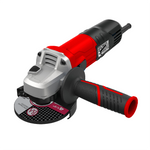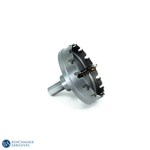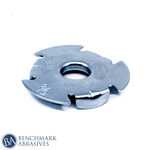
The Best Hand Tools for Cutting Metal: A Comprehensive Guide

From making fine jewelry to efficiently handling DIY home repairs, being able to cut metal accurately and effectively is an essential skill. Although power tools provide speed and efficiency for bigger operations, hand tools, on the other hand, remain vital for precise work, smaller projects, and conditions where accessibility and control are necessary.
Today, this guide will help you learn about the different types of hand tools for cutting metal.
Metal Cutting: Overview
The process of removing material from a workpiece to give it the required shape and size is known as metal cutting. This work can be done with both hand and power tools, each of which offers different levels of precision, speed, and force. The type of metal, its thickness, and the desired cut all play an important role in choosing the best metal cutting tools.
Key Hand Tools for Cutting Metal
Here is a breakdown of the most effective hand tools for metal cutting, from general-purpose saws to specialized nibblers.
1. Hacksaw
Best For: Cutting bolts, pipes, rods, and thin metal sheets.
A hacksaw, featuring a fine-toothed blade within a rigid frame, is a versatile and affordable tool used for general-purpose metal cutting. The blade is replaceable and available in different teeth-per-inch (TPI) counts. While lower TPI blades are ideal for softer, thicker materials, higher TPI blades can cut harder, thinner metals.
2. Tin Snips (Metal Shears)
Best For: Making quick, clean cuts in sheet metal.
Tin snips, also known as metal shears, are hand tools specifically designed for cutting metal roofs, gutters, sheet metal, and other thin materials. They work like heavy-duty scissors, with two sharp blades that pass close together to cut the metal. There are several types of tin snips, including:
- Straight snips: These blades work really well for cutting long, straight cuts in sheet metal due to their straight blades. They are not suitable for tight radii, yet they are capable of mild bends.
- Curved snips (Left cutting or Right cutting): The curved blades of these snips are usually designed to cut in a circular or curved manner. The curved snips are usually available in two different variations, i.e., Right cutting snips, usually have green handles, are perfect for cutting curves that deviate to the right. It diverts the waste material from the right-hand cut. Left-cutting snips, which are often determined by their red handles, are used for making curved cuts to the left.
- Compound snips: these are the most commonly used, or we can say, popular type of tin snips because of their greater leverage. They can cut thicker gauges of metal with less effort because of their compound hinge system, which amplifies the user's force. Additionally, they are available in straight-cutting, left-cutting, and right-cutting versions (often denoted by handles that are yellow, red, and green, respectively).
3. Bolt Cutters
Best For: Cutting thick, soft metal rods, bolts, chains, padlocks, and wire fencing.
Bolt cutters are powerful hand tools for cutting thick, soft metals like padlocks, bolts, chains, and rods. They use a special design to make the force you apply much stronger, so they can cut easily. With long, sturdy handles and short, hardened-steel jaws, bolt cutters are engineered to provide the necessary power for cutting bolts. These cutters operate by applying tremendous pressure on the material being cut.
Though they are often not appropriate for particularly hardened steel or operations needing a clean, accurate cut, their strong shearing action makes them invaluable in construction, demolition, security, maintenance, and even do-it-yourself projects where thicker metal has to be separated.
4. Hand Nibblers
Best For: Creating unique shapes, notches, and making cuts in tight spaces where bigger tools cannot reach.
Hand nibblers are popular hand tools that are particularly made for cutting sheet metal by continuously punching out small and overlapping pieces of material. Unlike some other cutting techniques, this motion produces both straight and finely curved slices in sheet metal without significantly altering the surrounding material.
Mostly, the tool consists of a punch and die mechanism that is activated by applying or squeezing pressure to the handles. Each squeeze eliminates a small chip of metal. This process of nibbling offers a more controlled approach to shaping metal, which makes it significantly useful for developing unique shapes, notches, and working in places where bigger power tools would not be able to reach.
They are a useful tool for intricate sheet metal work because they can handle complex curves and create rather clean edges, even if they are slower than shears for long, straight cuts.
5. Files
Best For: Slow, controlled material removal, smoothing edges, and removing burrs.
Files are commonly known for their ability to shape, smooth edges, and eliminate burrs from metal surfaces, and also act as fundamental cutting tools specifically for thinner pieces of softer metals. These hand tools feature a hardened steel bar with rows of teeth carved onto its surface.
Files can be suitable for slow, controlled material removal and also used for cutting through thin, malleable metals by continuously scoring and wearing away the material along a particular line. Although metal files are not as efficient or accurate as saws or snips.
6. Scribers
Best For: Creating precise, permanent guidelines on metal that won't smudge like pencil or marker lines.
Scribers are mainly used to accurately draw lines on metal surfaces, which is a crucial first step before cutting. These lines act as a clear, precise guide for your tools. To use it, you simply press gently and drag the sharp point across the metal, creating a tiny, permanent scratch or groove.
Compared to a pencil or marker line on metal, this line is far more precise and less likely to smudge, guaranteeing that cuts done with saws, snips, or other instruments adhere to the desired measurements and shape. Therefore, even though the scriber is not a cutting tool itself, it is still an essential supplement to metal-cutting hand tools, ensuring precision and accuracy in all metalworking operations.
Tips for Effective and Safe Metal Cutting
No matter which tool you use, following these best practices will ensure a safer and more successful outcome.
- Wear Safety Gear: Always wear proper personal protective equipment (PPE), including safety glasses to protect from flying metal shards and gloves to protect your hands.
- Secure the Workpiece: Clamp the metal firmly in a vise or with C-clamps to prevent movement and vibration, which leads to cleaner cuts and prevents tool damage.
- Use the Right Tool: Ensure your tool or blade is appropriate for the material's type and thickness.
- Apply Controlled Pressure: Do not apply much pressure; let the tool do the work.
- Follow Your Line: Pay close attention to your marked line (created with a scriber) to ensure accuracy.
Conclusion
From the general-purpose hacksaw to the specialized hand nibbler, a wide range of hand tools exists for cutting metals. By understanding each tool's unique function and following proper safety and usage guidelines, you can finish a variety of metalworking projects with confidence and achieve precise, professional results every time.



































































